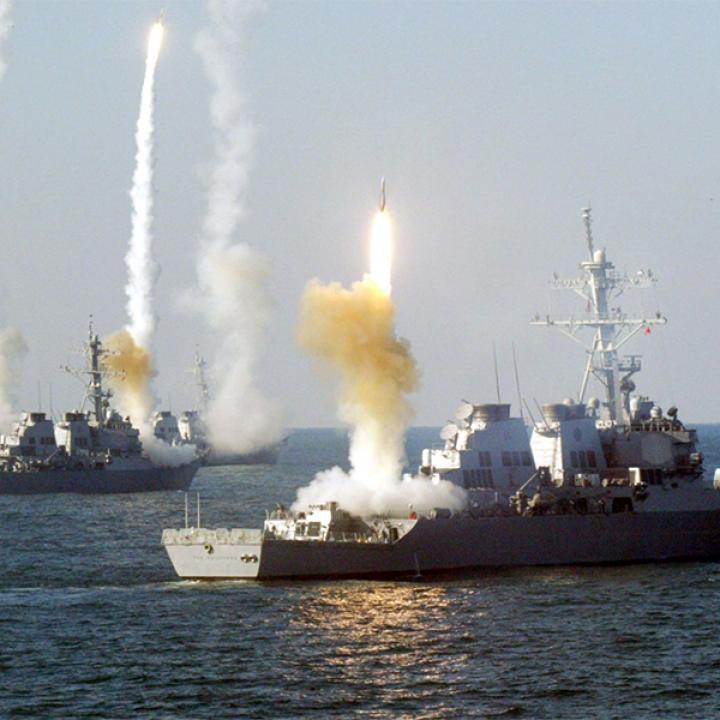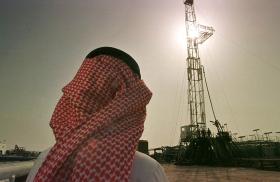
- Policy Analysis
- PolicyWatch 2122
Taking Punitive Military Action Against the Syrian Regime

If Washington and its allies decide to strike the Syrian regime in response to last week's chemical attack, they should strike hard, with the aim of achieving significant political and military effects.
Washington may be approaching a decision to take direct military action against the Syrian regime for its increasingly certain role in the August 21 chemical weapons strike in the Damascus area. Any such action should be planned with an eye toward achieving several limited but important military objectives: namely, showing resolve in holding the regime accountable for use of chemical weapons, warning the regime that further use will lead to potentially escalating strikes, and reducing the regime's ability to conduct CW attacks.
These objectives are well within the capabilities of U.S. and allied forces and could be achieved with limited, low-risk (though not "no risk") actions. They do not require an overwhelming attack on the entire regime structure and its forces, though provision for follow-on strikes and regime retaliation would be necessary. At the same time, any planned military action must be strong enough to achieve these goals, since ineffectual strikes would only encourage the regime, dishearten its opponents, and hamper Washington's ability to conduct further actions if necessary.
DELIBERATIONS AND PREPARATIONS
Since last week's attack, the Obama administration has been holding intense deliberations to determine what happened, who was responsible, and how the United States should respond. According to various media reports, the White House has concluded that an attack did occur and that it was likely conducted by regime forces. This raises the prospect that the United States will carry out direct military action against the regime and/or its forces, most likely in concert with European allies who have reached similar conclusions. Regional allies may join, or at least support, the action as well. Washington has reportedly begun positioning military assets in the region to conduct a strike, including four Arleigh Burke-class guided missile destroyers.
GROWING CASE AGAINST THE REGIME
At least several hundred Syrians reportedly died and several thousands were wounded in last week's attack. According to Doctors Without Borders -- an NGO with medical personnel at facilities that received many of the casualties -- the nature and sudden onset of the effects point to an attack with neurotoxins. While evidence gathering continues and no technical conclusions have yet been reached (or, at least, made public), it appears increasingly clear that the regime or elements within it ordered the attack, and that regime forces carried it out.
Chemical weapons have always been tightly controlled in Syria, including during the war. There have been no reports or indications that the regime has lost control of them or that the rebels have acquired a significant CW capability. In addition, last week's attack coincided with conventional regime military operations against the areas struck. All of these areas were home to large Sunni populations and major rebel activity. Indeed, the regime has experienced increasing military difficulties in the Damascus region: it has been unable to clear rebel forces from the area and is facing offensive pressure there. Thus, while rebel responsibility cannot be completely ruled out, that possibility is "vanishingly small," as British foreign secretary William Hague put it.
POLITICAL AND MILITARY GOALS
Any strike against Syria should have significant goals, but they do not have to be all encompassing (e.g., regime change). A "punitive" strike could be limited in scope while still having important effects on the situation.
As mentioned above, the political goals of such a strike could include holding the regime accountable for last week's CW attack and bolstering deterrence against future CW use. A strike might also weaken the resolve of regime supporters, encourage fissures within the regime, and bolster the armed and political opposition.
Military goals could include reducing the regime's ability to conduct future CW attacks, signaling to its forces that they are directly at risk if they use such weapons, and establishing boundaries for the regime's use of force against civilians. In addition, a strike could weaken key regime units (especially in the Damascus area), increase defections, and improve the military position of rebel forces around the capital. An expanded target list could include surface-to-surface missile units and air force units/facilities with a CW mission or capability
A punitive attack does not mean a weak or token attack. It should be a punishing strike mounted with enough strength to inflict serious damage on the targets. It should also be conducted in a highly visible manner to ensure that its impact is seen, heard, and felt by the regime and the opposition. Specific targets should include the Damascus-area headquarters, barracks, and support facilities of the 4th and Republican Guard Armored Divisions (two units heavily involved in the bombardment of civilian areas), as well as any field artillery units associated with the CW attack. Allied forces should also strike higher-level military and intelligence headquarters and command-and-control facilities associated with military operations around the capital. This means putting enough weapons on the targets to ensure high levels of destruction.
RISKS AND CONCERNS
There is no military action without risk, and a punitive strike on Syrian regime forces would carry some. Weapons could hit unintended targets, perhaps killing civilians. Some targets could be insufficiently damaged or missed entirely, necessitating restrike. The regime could strike back in unexpected ways against U.S. and allied interests, or it could resort to further CW attacks inside Syria. Any manned aircraft operating over Syria could be downed or suffer mechanical failure, resulting in air crew casualties or prisoners. And Russia could decide to increase its military assistance to the regime, including provision of sophisticated S-300 surface-to-air missile batteries or other systems.
Although these risks cannot be eliminated, they can be managed -- they are not sufficient reasons to avoid taking action. They must also be balanced against the consequences of not acting, such as destroying U.S. credibility and giving the regime a green light to conduct more CW attacks.
CONCLUSION
There are many potential options for direct military action in Syria, ranging from token strikes with small numbers of weapons to much broader operations such as attacks on leadership targets or the imposition of no-fly and no-drive zones. In addition, the United States could respond indirectly by providing truly significant military assistance to the rebels. All of these options have their own potential benefits and risks; some seem more likely than others given the Obama administration's aversion to using military power in Syria and the difficulty of forging allied consensus on goals and methods. A punishing strike linked to CW use seems to balance potential benefits and risks.
In any case, one thing is clear: given the regime's near-certain culpability for last week's CW attack, the United States should strike it, and strike it hard. This does not entail regime removal or a massive operation to "fix" Syria; allied action can be limited in scale. But it should still be strong, with telling effects. It should also hold the promise of potentially stronger strikes if the regime uses, or even threatens to use, chemical weapons again.
Jeffrey White is a Defense Fellow at The Washington Institute and a former senior defense intelligence officer.


